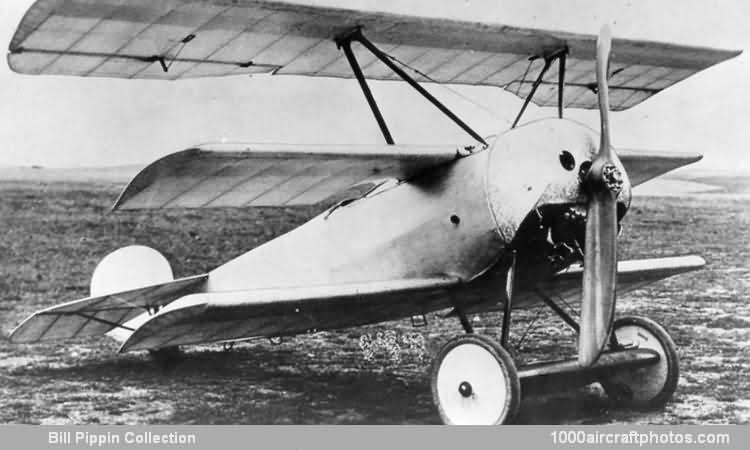03/31/2013. Remarks by Johan Visschedijk: "The V.4, also referred to contemporaneously as the D.VI - although possessing no relationship other than a common design origin to the fighter subsequently to be officially assigned that designation - was originally designed as a single-seat fighter biplane ordered on May 13, 1917 for the Austro-Hungarian Luftfahrttruppe. As a result of the service début of the Sopwith Triplane, however, this aircraft was completed by Reinhold Platz - at the behest of Anthony Fokker - as a triplane.
(NOTE: The 'V' originally signified 'verspannungslos' (i.e., without bracing, or cantilever), as the Platz-designed 'V' series progressed it came to mean 'Versuchsflugzeug' or 'Versuchstyp' (experimental aircraft or type).
The V.4 (a prototype frequently to be erroneously referred to as the V.3) was an extremely compact aircraft powered by a 120 hp Le Rhône nine-cylinder rotary engine, having a slab-sided, rectangular-section, fabric covered fuselage and three staggered cantilever wings. All three wings were of the same chord and section, but the top wing was of greater span than the equi-span middle and bottom wings.
The V.4 was flown at Schwerin for the first time in May 1917, and, unlike preceding Platz fighter designs, had orthodox unbalanced ailerons on the top wing and unbalanced elevators. Aerodynamically balanced ailerons and elevators were introduced after initial flight testing, together with I-type interplane struts to reduce wing flexing. Two synchronized LMG 08/15 machine guns were fitted, and, in late August 1917, the V.4 was shipped to Austria-Hungary.
Prior to this, on July 5, a second and similar V.4 had been ordered, and, six days later, a contract had been placed for two more as V.5s to be powered by the 110 hp Le Rhône, a copy of which, the Oberursel Ur II, was to power the series Dr.I fighter."
